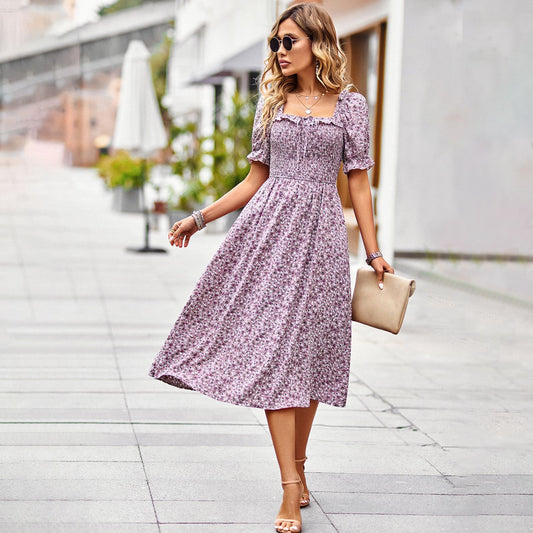-
Pullover Sexy Belted Long Sleeve Short Dress
Regular price $50.00 USDRegular priceUnit price per$50.16 USDSale price $50.00 USDSold out -
Beaded Waist Controlled Sexy Dress
Regular price $58.00 USDRegular priceUnit price per$58.41 USDSale price $58.00 USDSale -
Sequined Long Sleeve Waist Pleated Hip Sexy Dress
Regular price $74.00 USDRegular priceUnit price per$74.37 USDSale price $74.00 USDSold out -
Sexy Sequin Sleeveless Split Dress
Regular price $45.00 USDRegular priceUnit price per$45.60 USDSale price $45.00 USDSale -
Sleeveless Elegant Sexy Long Sequined V neck Backless Cocktail Evening Dress
Regular price $156.00 USDRegular priceUnit price per$156.75 USDSale price $156.00 USDSale -
Plus Size Summer Printing Loose Long Dress
Regular price $36.00 USDRegular priceUnit price per$36.00 USDSale price $36.00 USD -
Knitted Base Sweater Dress
Regular price $33.00 USDRegular priceUnit price per$33.60 USDSale price $33.00 USDSale -
Lazy Chic Office Knitted Loose Turtleneck Maxi Dress
Regular price $46.00 USDRegular priceUnit price per$46.41 USDSale price $46.00 USDSold out -
Long Sleeve V Neck Casual Loose Knitted Pullover Long Sweater Dress
Regular price $43.00 USDRegular priceUnit price per$43.98 USDSale price $43.00 USDSale -
Round Neck Short Sleeve Slim Fit Large Swing Stitching Tiered Dress
Regular price $38.00 USDRegular priceUnit price per$38.01 USDSale price $38.00 USDSale -
Solid Color Stitching Casual Sleeveless High Waist Slim Fit Maxi Dress
Regular price $23.00 USDRegular priceUnit price per$23.91 USDSale price $23.00 USDSale -
Casual Button Sleeveless Plaid Waist Tight Knitted Hip Dress
Regular price $27.00 USDRegular priceUnit price per$27.24 USDSale price $27.00 USDSale -
Sexy Tight Split Faux Leather Solid Color Rivet Dress
Regular price $51.00 USDRegular priceUnit price per$51.21 USDSale price $51.00 USDSale -
Casual Square Collar Flare Large Swing Ruffled Maxi Dress
Regular price $33.00 USDRegular priceUnit price per$33.00 USDSale price $33.00 USD -
Casual Printed Waist Controlled Puff Sleeve V neck Maxi Dress
Regular price $41.00 USDRegular priceUnit price per$41.61 USDSale price $41.00 USDSold out -
Summer Sexy Spaghetti Straps Chest Wrap Dress
Regular price $36.00 USDRegular priceUnit price per$36.81 USDSale price $36.00 USDSale -
Long Sleeve off Shoulder Casual Loose Knitted Sweater Dress
Regular price $32.00 USDRegular priceUnit price per$32.01 USDSale price $32.00 USDSale -
Graceful Tube Top Vintage Printed Contrasting Color Dress
Regular price $36.00 USDRegular priceUnit price per$36.72 USDSale price $36.00 USDSold out -

 Sold out
Sold outFloral Casual Square Collar Dress
Regular price $41.00 USDRegular priceUnit price per$41.79 USDSale price $41.00 USDSold out -
V neck Long Sleeve High Waist Floral Print Long Lace Dress
Regular price $65.00 USDRegular priceUnit price per$65.88 USDSale price $65.00 USDSale -
Summer Casual Solid Color V neck Waist Tight Fresh Air Dress
Regular price $41.00 USDRegular priceUnit price per$41.61 USDSale price $41.00 USDSold out -
Maxi Casual Solid Color Cotton Linen Sleeveless Dress
Regular price $28.00 USDRegular priceUnit price per$28.80 USDSale price $28.00 USDSale -
Basic Simple Letter Graphic Print Vest Dress
Regular price From $21.00 USDRegular priceUnit price per$21.18 USDSale price From $21.00 USDSold out -

 Sale
SaleSlim Denim Dress
Regular price $35.00 USDRegular priceUnit price per$35.49 USDSale price $35.00 USDSale
















































